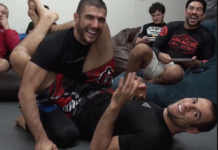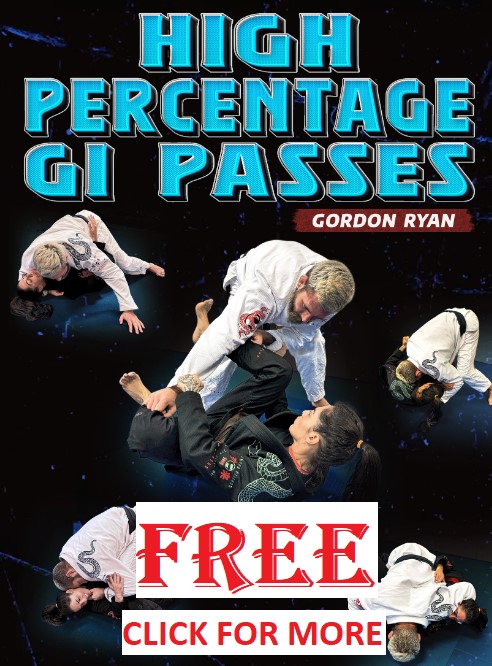
Have you tried training Brazilian Jiu-Jitsu? If you haven’t, perhaps it is time you give it a go. Nothing comes even near to the perfect martial art as much as BJJ does. It is everything you want in a martial art – an art, a sport, a self-defense system, and a physical and mental challenge. As such, it is the perfect blend of traditional values and freedom of individuality, which is not something many martial arts can claim. In fact, let’s be real – no other art has a chance. Yes, I’m biased about Jiu-Jitsu since I’m crazy about it. However, if you give it a try, you’ll just end up addicted too. And it will change your life forever.
Let me tell you a story. In fact, let me tell you three different stories. At the very end of the three stories, I’ll also leave you a task you need to perform. After you get the complete experience, you can draw a conclusion by yourself whether or not Brazilian Jiu-Jitsu is the perfect thing to train in this modern world of ours. We’ll start with the roots, but we won’t just do a historical account of things. Rather, we’ll allow individuals, from ancient Samurai warriors to legendary grapplers of today tell a story. Later on, we’ll reveal all the secrets of Jiu-Jitsu, in a way nobody has done it before. Finally, we’ll see if you can make the cut and joint those who can train in the ways of the Gentle art.
I. A JOURNEY THROUGH THE ROOTS OF JIU-JITSU
Where do we begin our journey to the world of Jiu-Jitsu? To be honest, it is difficult to say exactly. There are no real clear account as to where Jiu-Jitsu first developed. IN all probability, it was somewhere in India, where most likely, monks had to develop a fighting/meditation system to fit their needs. Whatever the truth is, we’ll never know. However, rest assured that Jiu-Jitsu is one of the oldest martial arts in the world, along with wrestling. In fact, it may just be the oldest. If only there was someone to tell the story in its entirety. Still, from a certain point in time, we can use the accounts of different people to take a unique journey through the world of the Gentle Art, from its Japanese roots to the modern version of Brazilian Jiu-Jitsu.
The Jiu-Jitsu Story Of An Ancient Samurai Warrior

Preparing for a battle, a Samurai warrior is paying very close attention to his battle gear. He polishes his sword before turning to his armor. The armor is a huge source of pride for the Samurai warrior. However, it is bulky, heavy and very restrictivе. So, the Samurai warrior, already experienced in battle thinks to himself “how do I defeat an enemy wearing armor just like this one”? After all, if and when weapon break, fail or get lost in the heat of battle, how would someone defeat the heavy and dense armor? Punching is not an option, as it will cause no real damage.
So, our Samurai warrior decides to innovate. Instead of striking, he decides to grapple. The weak spots in the armor area the joints. Our Samurai realizes that and advises a way to use it to his advantage. He decides that, if need be, he’ll engage the enemy in close quarters aiming to break limbs and choke, using the armors weak spots, as opposed to striking. He shares his sentiment with his fellow Samurai brothers, and they start working on different ways to grapple for their life on the battlefield. Jiu-Jitsu is born, in its original, raw and life or death version. The world just changed forever, despite the birth of Brazilian Jiu-Jitsu still centuries away.
Dr. Jigoro Kano And The Judo – Jiu-Jitsu Connection
Let’s fast forward a couple of hundred years. The Jiu-Jitsu of the Samurai is now a well developed and extremely deadly system for hand to hand combat. However. times of peace have replaced times of constant war and conflict. Training in the art is hard since it is difficult to use the deadly moves and now injure a training partner. The change of times also brings with it the need for a change in the very foundation of Jiu-Jitsu.
Jigoro Kano is a barely 90 lbs heavy, 5 feet 2 inches Japanese kid living in the mid-1800. He takes upJiu Jitsu to develop his strength and be able to defend himself. By now, Jiu Jitsu has been modified enough to be a martial art that is relatively safe to train. It still requires a lot of strength, though, and Kano is no Samurai warrior. He is, however, a visionary. After becoming a master of the art of Jiu-Jitsu, he introduces changes of his own.
What Dr. Jigoro Kano does is adopt the mantra of “Maximum efficiency with minimum effort”. His effort bring about the birth of Kodokan Judo, an art born straight out of the Jiu Jitsu that the Samurai originally used. However, Kano’s style of grappling is different. It has a ranking system, a carefully thought out uniform that is practical, yet still reflects the old values of the samurai. Moreover, it is safe to train while still being extremely efficient for self-defense.
Needless to say, Jigoro Kano’s Judo becomes hugely popular across Japan, and then, the world. Working as an educator in a school,m Kano used his influence to establish a physical training program in schools. It involved students training Judo and the trend caught on, changing Japan, and the world forever.
The Maeda Era
Another Japanese standout Judokas story brings us that much closer to Brazilian Jiu-Jitsu and the modern-day grappling revolution that engulfs the globe. That man is Mitsuyo Maeda. Also known as Count Koma, Maeda is actually a contemporary of Dr. Jigor Kano, only younger. He started training directly in Judo, skipping over the Jiu-Jitsu part of the origins. An exceptionally talented athlete, Maeda flies through the ranks of Kodokan Judo. A model student of Judo, Maeda got the opportunity of a lifetime – travel and help his instructor, Tsunejiro Tomit spread Judo in the USA.

What does this have to do with Jiu Jitsu, and Brazilian Jiu Jitsu in particular? Well, one of these travels brought Maeda to Brazil. He was there helping Japanese immigrants settle in since he decides to permanently live in Belem. Inevitably, he eventually opened a Judo academy in Rio. The moment a student named Carlos Gracie stepped in Maeda’s academy, another chapter in the history of Jiu Jitsu started.
How Kano Jiu Jitsu Forever Changed The Lives Of A Brazilian Family
The things that Maeda taught back in the day were far from the polished product that we know as Kodokan Judo nowadays .in fact, it was long before Judo became an Olympic sport. What Maeda thaught was more known as “Kano Jiu-Jitsu” as it was a variation of the samurai Jiu-Jitsu that Kano was still developing into Judo. As such, self-defense aspects of it were hugely emphasized. However, it is exactly Maeda’s take on it that gave Carlos Gracie the inspiration to eventually develop the Brazilian Jiu-Jitsu of today.
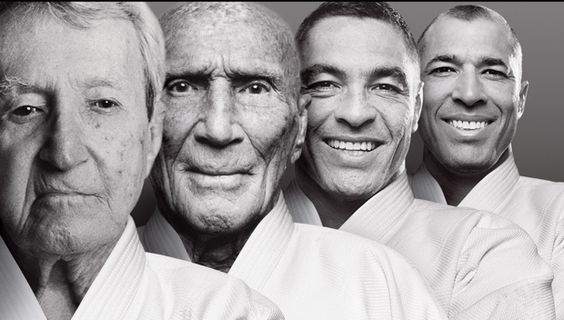
Suffice to say, Carlos took things a giant step forward. He did not only learn techniques from Maeda, but also the basic principles and concepts of the art of Kodokan Judo. As such, he really likes the Ne Waza part, otherwise known as ground fighting. So, after several years of innovation, Carlos actually came up with something that was not exactly Kodokan Judo, but rather closer to the Jiu Jitsu of old. However, it wasn’t pure Jiu Jitsu either, but a mix of many generations of innovation in a grappling sense. It was Brazilian Jiu Jitsu in its raw and infant form. And it changed the world, and in particular, the trajectory of the Gracie family once and for all.
The Ultimate Gracie Ambassador – Rickson Gracie

Rickson first put the Gracie family on the map through his many victories in Vale Tude at the local scene. In the 1980s and ’90s. he was unbeaten in all fo his matches, some of which became legendary. Helio groomed him for such greatness from an early age, really taking his Jiu-Jitsu skills to the next level. Rickson went on to win several grudge matches, the likes of his two bouts with Zulu.
At a certain point in time, Rickson moved to the USA, still laminating his role of a challenger. He defeated anyone and everyone that came in his way. In fact, he is undefeated in grappling, No Holds barred and MMA matches. His MMA career was under the Pride banner, when he truly became world-famous, giving Brazilian Jiu-Jitsu the platform it neede to become a worldwide phenomenon. To this day, Rickson is one of the most respected and accomplished Jiu-Jitsu artists out there. He is currently the holder of a red belt in Brazilian Jiu Jitsu, the highest possible rank.
The Modern BJJ Game
From the ancient Samurai that saw the need to grapple rather than strike, we followed the stories of different people all the way to modern-day Brazilian Jiu-Jitsu. In the modern-day era, BJJ is something no fighter can do without, Moreover, it is a professional sport of its own. There are competitions all across the world and tens of thousands of practitioners, training both with the Gi and without it. As such, the one thing that sets Jiu Jitsu apart form every other art is the fact that it never stops evolving. While there are some core values of art, individuality and innovation are highly encouraged. As such, they give birth to new moves, concepts, and styles almost daily.
The story of Brazilian Jiu Jitsu nowadays is still being written. That means that we could go for ages talking about the start grapplers of today. How will the story end? Hardly anyone can guess that, but if history is anything to go about, it’s bound to be entertaining and interesting!
II. BRAZILIAN JIU-JITSU – EVERYTHING ABOUT
Our second story is going to explore the world of modern Brazilian Jiu Jitsu and the many different aspects of it. You’ll hardly find people that train Jiu Jitsu today who are not completely addicted to it. If there’s one good thing to get addicted to, it’s BJJ. Nowadays BJJ is a complete lifestyle, extending much further from the confinements of a gym. People that train BJJ, live a life of grapplers and are a part of a global community that extends all across the world. Today, in the era of the BJJ killer nerds, there’s no real profile of the person that can train Jiu Jitsu. From the stay at home mum to the professional grappler preparing for the ADCC, everyone can train in the same room together. Needless to say, BJJ has come a long way from the original Kano Jiu Jitsu that started the whole grappling revolution.
What Exactly Is BJJ?
Today, Brazilian Jiu Jitsu is mostly a sport, on that people train for various reasons. In terms of categorization, BJJ is a grappling martial art/sport, one that doesn’t involve striking. While strikes are still a part of many curriculums, they’re not part of competitive affairs. That said, BJJ’s strong suit is definitely Ne Waza, or fighting on the ground. In simple terms, once you get to the ground with an opponent., if you know Jiu Jitsu, it will be like quicksand for the person you’re grappling with.
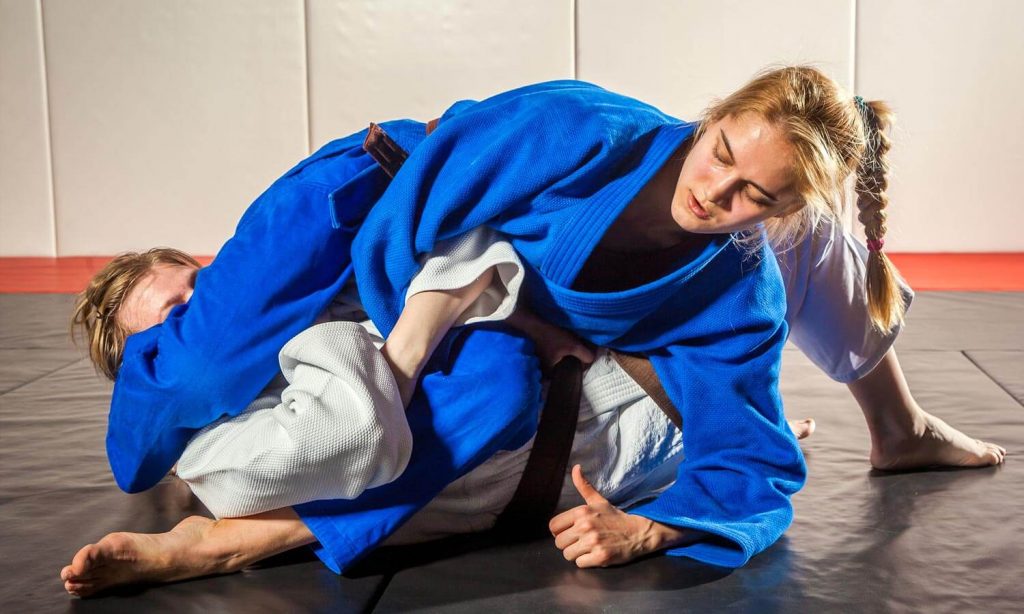
What makes Jiu-Jitsu so fun, though, is the part where people actually train live. In most arts, this is called sparring, akin to the Randori Kano first introduced. In modern-day BJJ, people used the term rolling, as most of the sparring takes place on the ground. During that time, two grapplers are trying to outwit each other, exchanging techniques in order to establish dominant positions and/or get submissions.
Jiu-Jitsu For Self Defense
A huge aspect of Brazilian Jiu Jitsu is self-defense. In the spirit of original Japanese Jiu Jitsu, when the Samurai fought for their lives, Jiu Jitsu is still a practical fighting system nowadays. While any move you learn in class can work perfectly for self-defense, there are some that are particularly useful. As such, most schools around the world focus special attention to self-defense. However, it is safe to say that this part is completely different from what the Samurai used to do.
In today’s self-defense Jiu Jitsu, strikes are still not a part of the system .granted, you learn how to move around them and block as well as utilize some yourself. However, there’s no need to learn spinning kicks or crazy jumping attacks. Instead, the goal is simpler–get close to your opponent/attacker and take them down. In fact, statistics show that 90 % of altercations end up on the ground. However, the ground is where most people actually have no idea what to do. Jiu Jitsu changes that.
Once a grappler that trains Brazilian Jiu Jitsu hits the ground, the fight can begin. BJJ teaches us how to stay safe, whether we’re on our backs or on top., Moreover, it teaches us how to establish dominance, even from positions that seem like very bad spots to be in. After we’re safe and have a dominant position BJJ offers something o other art does – the option to resolve everything without injuring the opponent. In other words, you can hold someone down pinned and deescalate the situation. Conversely, you could use a submission to really hurt them, or even strikes if you want to. All in all, there’s hardly a better martial art for self-defense than Jiu Jitsu, particularly in one-on-one altercations.
Sports Brazilian Jiu-Jitsu (Competing)
The other side of modern-day Jiu Jitsu is the competition circuit. It is safe to say that this side of BJJ is the strongest one, getting far more attention than self-defense. Sports Jiu Jitsu offers tournaments across the world in one of two main formats; Gi or No-Gi. The first one means people wear traditional Kimonos, similar to Judo ones, with several key modifications. In the other format, people grapple with shorts only, or shorts and a rashguard, similar to what wrestlers do.
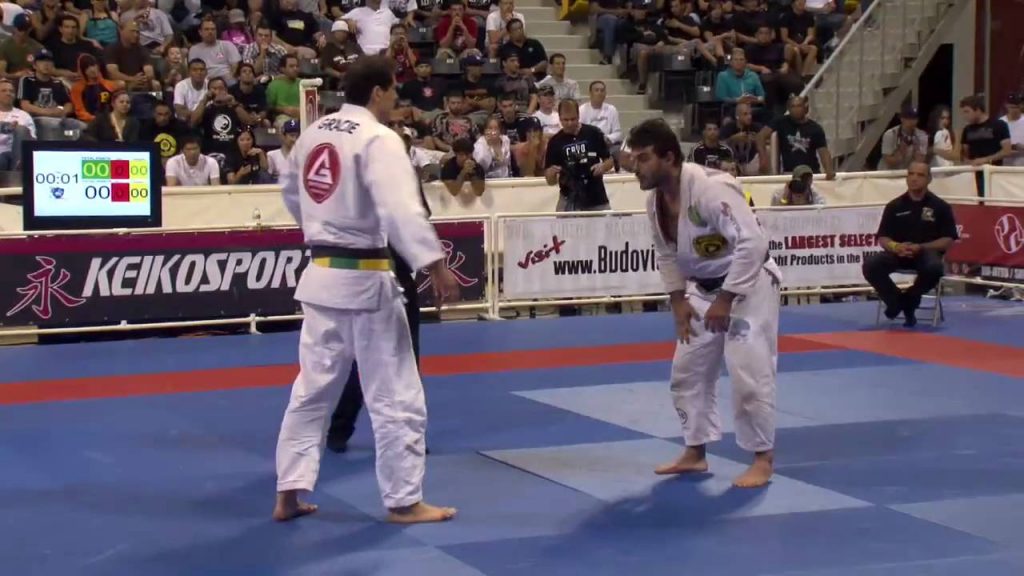
There are also professional Brazilian Jiu Jitsu tournaments, again with or without the Gi. This is where people usually get invited, and there are substantial cash prizes. However, certain pro tournaments are also open to the public, allowing people to qualify for them. Another unique aspect of Jiu Jitsu is that people could easily end up facing their idols in the black belt divisions, which is not something common in other arts. Also, you could become a legitimate black belt,m perfectly capable of self-defense without ever competing in Brazilian Jiu Jitsu.
The MMA Crossover
One thing that really helped popularize Jiu Jitsu was MMA. In fact, the relationship between MMA and Brazilian Jiu Jitsu is a tight one. Basically, one would not exist without the other. It was the |Gracies, that decided to put together an event to prove Brazilian Jiu Jitsu could beat any other art. That event was named the Ultimate Fighting Championship and it was pretty much a No holds barred event. The first few editions were won by Royce Gracie. He turned up in his white Gi and choked or otherwise submitted everyone across him, without any rules or referees.
After Royce’s performance,s the world was hungry for more of the same and slowly, MMA was born. As it developed into a sport, with plenty of rules and regulations, the Gracies still thrived. In fact, in the short sabbatical the UFC had, Pride became huge. We already mentioned that Rickson was one of the main champions of the organization. From there on, both MMA and Jiu Jitsu have been helping each other spread around the world. Nowadays, no MMA fighter could hope to have a stellar career without Jiu Jitsu. Conversely, many Jiu Jitsu standouts decide to also dabble in MMA in order to get more financial opportunities.
Belts, Gis, And Other Grappling Fashion Statements
Several times so far I mentioned Gis and belts, and even rashguards. For most people, they might be something that doesn’t’ require explanation. However, for those that need it, let me elaborate. The Gi is a uniform that is traditional in Japanese martial arts. The Samurai wore a version of it under the battle armor. It consists of a jacket that closes by overlapping at the front and pants. The first round of modifications came courtesy of Jigoro Kano, who neede da better uniform for his developing Judo. Later on, the Gracies also “fixed’ several things like sleeve width and the length of the skirt fo the jacket.
Nowadays, the Gi, along with the belt is pretty much the standard for BJJ. There are countless different color designs but only three are officially allowed for competition: blue, white and black. Conversely, those are the colors that feature most often. The belts work pretty much like in any other art. You start as a white belt and move through the ranks to get to black belt. In between are blue, purple and brown belt. There are also belts after the black belt, coming in the form of coral and red belts. However, only a handful of people can get to them, after a lifetime of grappling. There is also a kids belt system featuring 12 belts that lead up to the blue belt.
For people training without the Gi, modern-day Brazilian Jiu Jitsu offers numerous designs of rashguards and spats. A pair of shorts usually accompanies them to complete the No-Gi attire. In terms of competition, ranked rashguards showing your belt level ara a requirement. People training exclusively in NO-Gi still go through the same ranks, although they do not wear belts.
Anatomy Of A BJJ Class
Finally, before moving on to actual Brazilian Jiu Jitsu training, let’s see what a class looks like. The class atmosphere in BJJ is usually very relaxed. Students lien up to greet the instructor before doing a short general warmup, followed by a specific warm-up or drills. When it comes to the technical portion, it usually consists of at least one takedown or self-defense technique and a couple of ground techniques. The instructor demonstrates and then students take turns learning the techniques. Positional sparring, concerning the techniques of the day, is usually the way a class ends. Before the end, though, it is time for the most captivating part of Jiu Jitsu training – rolling.

Apart from the regular classes, seminars are also a huge part of BJJ. High-level black belts, particularly competitors usually travel the world in between tournaments holding seminars. A BJJ seminar usually lasts 4-5 hours, or even more and are usually multi-day events. That means that they are a huge learning opportunity and help people advance rapidly.
Finally, there are private classes. Thos are one on one classes with an instructor of your choice. They do cost more than a regular class. In fact, the higher level the instructor, the higher the cost of the private lesson. However, you get the full attention of the instructor and you can learn tons.
III. WHY SHOULD YOU TRAIN JIU-JITSU?
So, now that it is clear how Brazilian Jiu Jitsu came to be, and what the modern version of JIu Jitsu is, could you train it? We talked a lot about challenges, MMA fights, No Holds Barred, Vale Tude, etc. Well, worry not. A common mantra by one of the leading BJJ organizations Gracie Barr is the phrase “Jiu Jitsu for Everyone”. This is 100 % true. Jiu Jitsu is an art that literally anyone, from a stay at home mum, through kids and teenagers, all the way to professional fighters or law enforcement officers can train. Moreover, they actually should train it.
Brazilian Jiu Jitsu offers a friendly atmosphere for people to express their individuality and get rid of daily worries and anxieties. Furthermore, you can progress at different speeds, as people literally get awarded belts whenever an instructor deems they’re ready, and not by doing elaborate tests in front of panels of judges. Like I said, unique, and the most perfect martial art in existence. Let’s dig a bit deeper.
The Game Of Human Chess
Blending every discipline Often times Brazilian Jiu Jitsu is referred to as the “game of human chess’. Once again, this is a phrase that is spot on. The main reason behind this is that you get to engage not just your body, but your mind as well. For now, let’s start with the body. Since Brazilian Jiu Jitsu takes place both standing and on the ground, you get a real full-body workout. That means you activate muscles that you can’t activate with any other sport. Moreover, you get to roll with people of different sizes and builds, meaning you always have external resistance in addition to your own bodyweight.
However, it is not the physical aspect of training that hooks most people. The addicting part is the mental aspect. In BJJ, when you train, you constantly have to solve puzzles. As you progress through h the ranks, you start thinking several steps ahead, baiting your opponent. The best part is that they’re trying to do the very same to you. And that is what makes it so exciting and addictive. Plus it is all done in a friendly atmosphere, where people go to have fun and blow off steam. Moreover, there’s no better way to forget about all your daily worries than just going for a class and topping it off with several good rolls.
A Few Reasons Why Jiu-Jitsu Is For Everyone
So, that said, let’s explore some of the key benefits of Jiu Jitsu that concern everyone. Of course, there’s the physical aspect we just mentioned. For most people, particularly those with sedentary jobs, there’s hardly a better option than Jiu Jitsu. While you train, you’ll become stronger, you’re going to get in shape and you’ll develop great flexibility. It is like training running, weight lifting and Yoga at the same time. What’s even better, you’re learning a martial art while doing it, on that can actually help you defend yourself.
For many involved in Jiu Jitsu, there’s also the team aspect of the sport. Whether it is competition tams, drilling groups or just a favorite training partner, you get friends for life at BJJ. In fact, there’s a worldwide community that’s as friendly as you can imagine. In certain instances, BJJ is great to get rid of different common modern-day issues, like depression, anxiety, etc. Plus, it gives you a fun activity to do.
Let’s also mention that you could even turn Jiu Jitsu into your livelihood if you want to. From professional tournaments to holding seminars or even working at your academy, you could make a decent living from Jiu Jitsu. And it’ll be the best job you’ve ever had!
Empowering Women
When we say that Jiu Jitsu is for everyone, we truly mean it. Just walk into a BJJ academy anywhere in the world and you’ll see all kinds of people. What oyu’ll easily notice is that there’s no lack of female practitioners as well. Unlike other martial arts, Brazilian Jiu Jitsu has no restriction when it comes to women of all ages training. Certainly, some of the ladies choose the life of a competitor and many have become world champions. Other,s just like a different kind of workout than pilates or CrossFit. Both of these aspects are great, but there’s also a silver lining.

Kids And BJJ
When it comes to children, BJJ is just about the best thing you can sign your kid up for. Why? Well, first of all, it is the perfect way to counter the modern lifestyle. Since kids nowadays play catch and other games in a network using their tablets instead of outside, they lack basic coordination and movement skills. Jiu Jitsu classes are structured in a very specific way, one that teaches kids how to be kids again.
In BJJ, kids don’t just go to class to learn how to fight or just spend energy. On the contrary, they go to learn a huge amount of life skills. First and foremost, Jiu Jitsu teaches discipline and structure. Then, there’s the friendship spect, which is much more emphasized in BJJ than in other sports. It is not just about a team spirit, but also about training with a partner, one which you need to look after. This creates unique bonds among children, teaching them valuable lessons for the future. From a purely physical standpoint, Brazilian Jiu Jitsu is going to teach kids how to move, it will help them develop correct posture and high levels of coordination.

An Integral Tool For Fighters
We already took a glimpse at the MMA-BJJ crossover. However, it is not only MMA that benefits from Jiu Jitsu. Pretty much any grappling martial art, from wrestling, through judo all the way to Sambo can benefit from BJJ. In fact, there’s a standing give-take relationship there. Since Jiu Jitsu is clearly supreme when it comes to ground fighting, it can help other grappling martial arts practitioners improve this aspect of their game moreover, most o the standing techniques in BJJ are borrowed from Judo, Sambo or wrestling. This means that the best way to become a great overall grappler is to cross-train. Judo Olympian and BJJ black belt Travis Stevens is a great example of this.
Then, there’s MMA. In the beginning, people that knew Jiu Jitsu easily dominated MMA bouts. The Gracie family fighters were a great example. As the fighting world caught up, Jiu Jitsu became one of the mandatory arts to learn for Mixed Martial Arts fighters. Today, modern-day fighters are rarely specialists. For a while there, pure Jiu Jitsu specialists in MMA were scarce, as everyone worked on their ground game the same. As of late, we’re seeing a return of the BJJ specialist to MMA, particularly at the biggest possible stage – the UFC. Whichever way you look at it, you can hardly go wrong by cross-training at BJJ as you’re training another martial art.
Saving Lives: Law Enforcement And Grappling
Law enforcement and armed services are specialty branches that should make Jiu Jitsu training mandatory. When it comes to people who risk their lives on a daily basis, it is pretty much a flashback of how the Samurai used Jiu Jitsu back in the days of its inception. BJJ and law enforcement are actually a match made in heaven. For law enforcement officers, controlling someone until an arrest is made is usually the prerogative. Being able to control anyone, regardless of size, while not having to hurt them is a skill that every Jiu Jitsu practitioner has. Imagine how safe, and effective law enforcement officers would be if they all had this skill. And the solution is easy- just train Jiu Jitsu.
When it comes to armed forces who travel overseas, given the amounts of armor nowadays, the situation is not much different from ancient Japan when it comes down to hand-to-hand combat. while Jiu Jitsu doesn’t’ have a special aspect of it tailored for military use, the techniques are still highly effective. In fact, many of the members of the armed forces actually part take in grappling matches and rolling sessions to keep their skills sharp. The only thing lacking is making BJJ training mandatory and having it structured in the law enforcement and armed forces education process.
The BJJ Community
Last but not least, probably one of the most important aspects of training Brazilian Jiu Jitsu – The community. When I say community I don’t just mean the people that are a part of your Academy. In fact, the community stretches far beyond any geographical boundaries. The community is a worldwide phenomenon when you come to think of it. BJJ people are generally laid back and very friendly to each other. One way of discovering this is by going to train in other academies across the world. Most of the are going to be very welcoming. In fact, after trying to choke each other out, people always hug and slap hands, looking to keep every interaction fun and laid back. It is pretty much the same in competition, only after the matches conclude.
There’s also another aspect to the community, this one much more serious and important. The community looks after its members and you might find help in people you’ve never met simply because you enjoy the training same martial art. From fundraisers to charities and everything in between, the community looks after its own. Since it is spread worldwide, you get to interact with people from all across the globe, always looking to help one another. And the best part is, that even the people you meet in competitions ara actually your friends when you come to think of it. How many other martial arts offer you the opportunity to train with the same people that are your competition rivals? That is BJJ for you!
A Short Summary
If you take into account everything that we talked about today, you can conclude one thing – BJJ is still a young sport that is yet to develop. While it has a rich and long history, dating back to ancient Japan, Brazilian Jiu Jitsu is as different from its Japanese counterpart as they come. It is not just a different martial art, it is one born in a very different time. Moreover, it is an art that is constantly evolving, which makes it very unique in comparison to their martial arts. Not to mention all the physical, mental, social and other benefits it can bring to people.
To make things simple, after, you read this article, if you’re not training already, do the following steps. First, open Google. Second, search for a BJJ gym in your vicinity. Third, schedule an intro class and give it a couple of weeks. If you do not fall in love with it, beer is on me! OSSS!.


